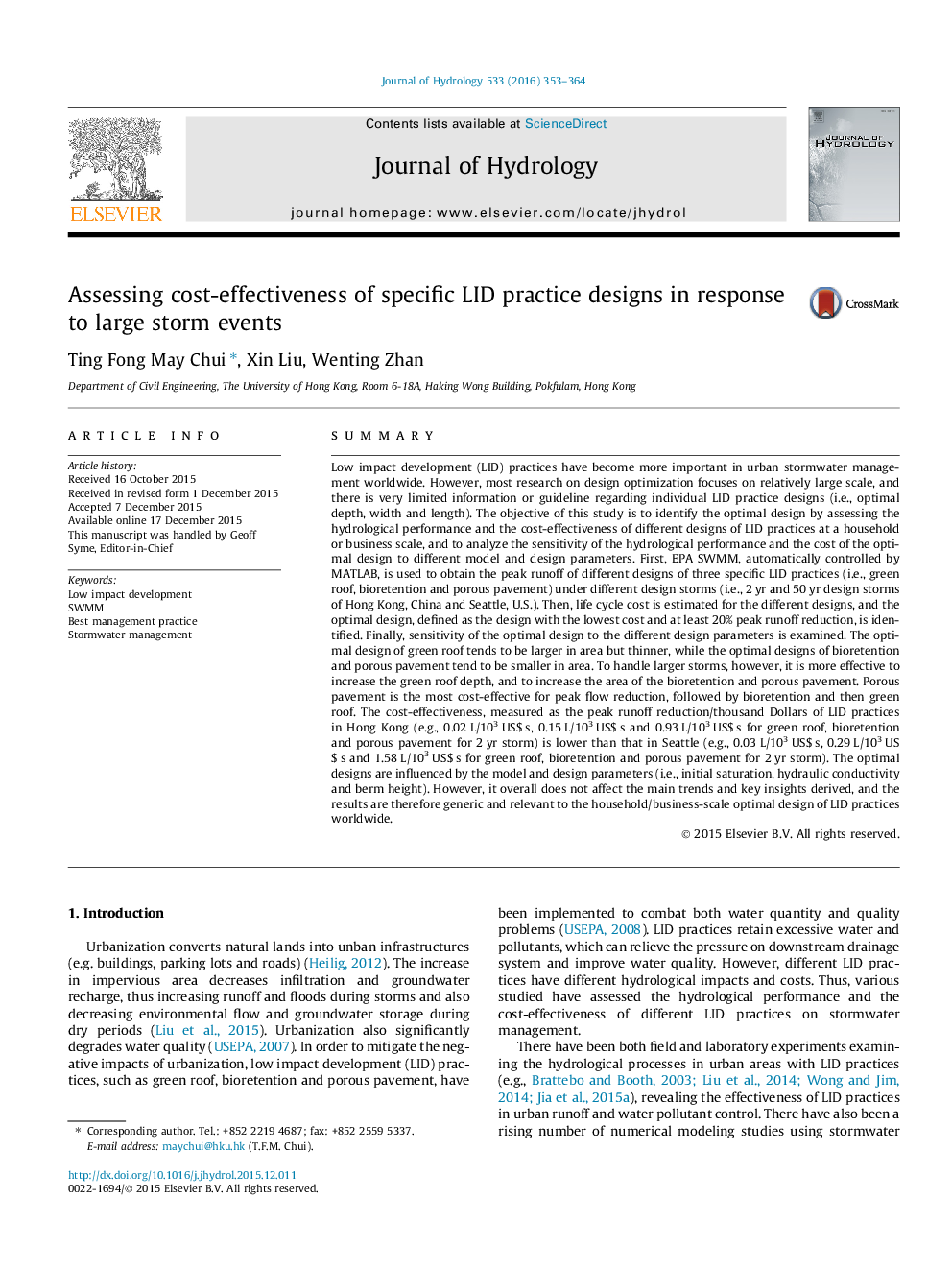| کد مقاله | کد نشریه | سال انتشار | مقاله انگلیسی | نسخه تمام متن |
|---|---|---|---|---|
| 6410511 | 1629919 | 2016 | 12 صفحه PDF | دانلود رایگان |

- Optimal designs of green roof, bioretention and porous pavement are derived.
- Peak flow reduction and life cycle cost are computed for various designs and storms.
- Porous pavement and green roof are respectively most and least cost-effective.
- All practices are more cost-effective in Seattle than in Hong Kong.
- Sensitivity to design parameters does not influence main conclusions.
SummaryLow impact development (LID) practices have become more important in urban stormwater management worldwide. However, most research on design optimization focuses on relatively large scale, and there is very limited information or guideline regarding individual LID practice designs (i.e., optimal depth, width and length). The objective of this study is to identify the optimal design by assessing the hydrological performance and the cost-effectiveness of different designs of LID practices at a household or business scale, and to analyze the sensitivity of the hydrological performance and the cost of the optimal design to different model and design parameters. First, EPA SWMM, automatically controlled by MATLAB, is used to obtain the peak runoff of different designs of three specific LID practices (i.e., green roof, bioretention and porous pavement) under different design storms (i.e., 2Â yr and 50Â yr design storms of Hong Kong, China and Seattle, U.S.). Then, life cycle cost is estimated for the different designs, and the optimal design, defined as the design with the lowest cost and at least 20% peak runoff reduction, is identified. Finally, sensitivity of the optimal design to the different design parameters is examined. The optimal design of green roof tends to be larger in area but thinner, while the optimal designs of bioretention and porous pavement tend to be smaller in area. To handle larger storms, however, it is more effective to increase the green roof depth, and to increase the area of the bioretention and porous pavement. Porous pavement is the most cost-effective for peak flow reduction, followed by bioretention and then green roof. The cost-effectiveness, measured as the peak runoff reduction/thousand Dollars of LID practices in Hong Kong (e.g., 0.02Â L/103Â US$Â s, 0.15Â L/103Â US$Â s and 0.93Â L/103Â US$Â s for green roof, bioretention and porous pavement for 2Â yr storm) is lower than that in Seattle (e.g., 0.03Â L/103Â US$Â s, 0.29Â L/103Â US$Â s and 1.58Â L/103Â US$Â s for green roof, bioretention and porous pavement for 2Â yr storm). The optimal designs are influenced by the model and design parameters (i.e., initial saturation, hydraulic conductivity and berm height). However, it overall does not affect the main trends and key insights derived, and the results are therefore generic and relevant to the household/business-scale optimal design of LID practices worldwide.
Journal: Journal of Hydrology - Volume 533, February 2016, Pages 353-364